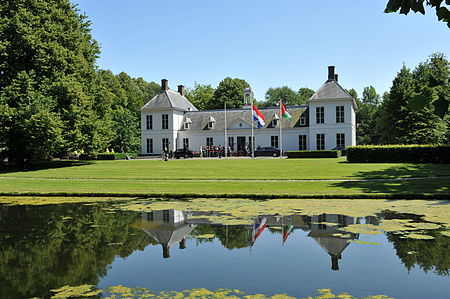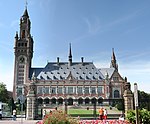Catshuis

The Catshuis (English: Cats House), initially known as Huis Sorgvliet (Sorgvliet House), is the official residence of the Prime Minister of the Netherlands. Built between 1651 and 1652 for Jacob Cats as private villa, it was renamed after him after his death. The Catshuis lies in The Hague on the road to Scheveningen. It has been the official residence of the Prime Minister of the Netherlands since 1963, although Dries van Agt was the last premier to live there. Prime Ministers since then have preferred to live in their own homes, such as the current Prime Minister Mark Rutte, who lives in a flat in the centre of The Hague, closer to his official office, the Torentje in the Binnenhof complex. The Catshuis residence is mainly used to house political meetings and receive official guests.
Excerpt from the Wikipedia article Catshuis (License: CC BY-SA 3.0, Authors, Images).Catshuis
Adriaan Goekooplaan, The Hague Scheveningen
Geographical coordinates (GPS) Address Website External links Nearby Places Show on map
Geographical coordinates (GPS)
| Latitude | Longitude |
|---|---|
| N 52.09 ° | E 4.285 ° |
Address
Catshuis
Adriaan Goekooplaan 10
2517 JX The Hague, Scheveningen
South Holland, Netherlands
Open on Google Maps






